August 31st, 2009 · 1 Comment
Anyone who has had a class with Professor Maggidis will know the Greek side of the Elgin Marble story quite well. According to him, the elaborate carvings were forcifully taken from the sides of the Parthenon by Lord Elgin, who did not have a right to them. The British Museum told a very different story. The current position of the Museum is that the Marbles were removed legally with the permission of the Ottoman authorities. However, the Greeks were not asked their opinion. Since the early 1980s, the Greek government has argued for the return of the Marbles to Athens. The British Museum believes that they are “a unique resource for the world: the breadth and depth of its collection allows the world to re-examine cultural identities and explore the complex network of interconnected world cultures.” This same mission statement also applies to the other artifacts of the Museum. However, “the Trustees’ view [the Elgin Marbles] are part of everyone’s shared heritage and transcend cultural boundaries.” To them, the splitting of the Parthenon Marbles between six major museums of the world allow for different interpretations to be examined. We are not so sure. What gives the British Museum the right to possess the sculptures after the Ottoman Empire dissolved and the Greek government asked for them back? Would they appreciate capstones from Stonehenge appearing in the Louvre or another major art museum of the world? Where’s the line between exhibiting cultural artifacts and claiming them as your own? You might ask us if we benefited from seeing the Elgin Marbles for free in the British Museum. Of course we did.
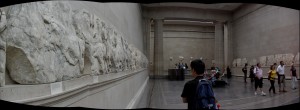
The Elgin Marbles in the British Museum - should they be here?
Continuing on our critical journey through the British Museum, we were struck by the assumption that every culture that the British encountered became part of the British cultural heritage. This was especially apparent in parts of the former Empire. This attitude was even expressed in places that dissolved from the Empire centuries ago. For example, after Buffalo Bill’s Wild West show in London, Queen Victoria was talking to Black Elk (a Native American chieftain) and said “I wish that I had owned you people, for I would not carry you round as beasts to show the people.” Although Queen Victoria probably meant well, this statement is preposterous! We think she meant that she didn’t approve of the Native Americans parading around making a parody of their culture for the entertainment of others. However, there seems to be a discrepency when looking at the colonies under Victoria’s control (India, Hong Kong, Africa, etc.).
The British Museum has made us rethink who should have posession over a cultural artifact. We believe that it’s a major grey area. Does a British archeologist digging in France have the right to the objects found, or does the French government? There are too many variables. We enjoyed almost everything we saw at the Museum and it was a great learning experience, but we couldn’t help but feel an uneasy sense of awe in the rooms where the decoration was in Britain, but the structure was elsewhere in the world.
Tags: Bureucracy · Grace · Kelley · Museums
August 31st, 2009 · 1 Comment
Imagine being in a place where all of your passions interconnect, where your heart races, you forget to breathe, your interest peaks. I have to remind myself to breathe today upon entering The Victoria and Albert Museum directly from stepping off the tube station into the museum. Deep breaths, I say to myself when I see Louis Richard Garbe’s piece, Primavera. Deep breaths I tell myself when I see the dresses by Catherine Walker worn by Princess Diana. Deep breaths when I stumble upon Joan Rhodes’s theatrical costumes, Reg Wilson’s performance photographs, sight of jewelry worn throughout centuries, breath taking carpets and other Islamic crafts. Inspiration surrounds me everywhere.
“Sculpture is a three-dimensional object with a message…”
Bob Brendle
After examining the sculptures showed at The Victoria and Albert Museum, I felt the messages sculptures were illuminating. A child and a mother, the look they share, the connection and love that exists between them. A cupid slyly planning his next attack, by preparing a bow and arrow to shoot at a King. Two soldiers fighting, the anger and determination in their stony eyes. Moving on to Islamic carpets, I am reminded of my own culture, of beautifully woven rugs and elaborately decorated vases. Not having a map at hand, I began walking through the museum, stumbling upon the silver lined plates and crafts of Paul de Lamerie and the portion of the museum which holds theatre exhibitions. Ranging from costumes worn by Joan Rhodes to the construction of the stage and backstage look at the performances in 18th Century, I was pleasantly surprised. Although the museum provided satisfaction to all of my senses, I was on the quest to finding two of my upmost passions, photography and jewelry. As I finally stepped through the doors of jewelry exhibit, I was blinded by diamonds, gold, silver, crowns, pendents. I thought “This is what heaven must look like” (at least in my world). Behind glass windows, jewels worn in 1500’s lined against the walls ranged to the present trends in jewelry. Inspiration surrounding me everywhere, I headed towards the photography section. As I entered, I was overpowered by Charles de Temple, E.R. Nele, Roger Moris and many more. The museum began acquiring pieces in 1852 and now I was in the presence of classic as well as contemporary works. One piece that particularly caught my attention was of a “Shell-shocked Soldier, Hue” by Don McCullin in 1968 taken during the Vietnam War. The simplicity yet so much emotion behind the piece and the soldier’s eyes is indescribable. My passion has ignited. Although I have always captured my surroundings and emotions through a camera lens, seeing the photography exhibit has encouraged me and made me hope that one day I can also show my work. Who knows what holds in the future for me and my photography. But for now I am planning on returning to The Victoria and Albert Museum and exploring other photography exhibitions in London such as Tom Hunter’s “A Journey Back” shown close by on Oxford Street.
I am inspired. 
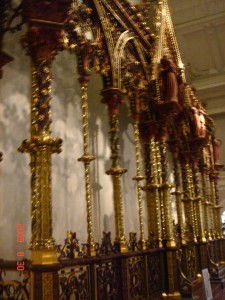
Tags: Jeyla · Museums
-
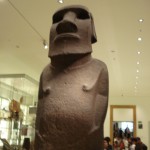
-
Part of the African Exhibit in the British Museum
-
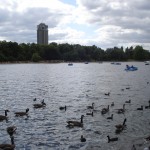
-
Hyde Park Waterfront
-

-
Regents Park
-

-
Walking towards the Notting Hill Carnival
-
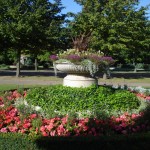
-
Flowers in Regents Park
-
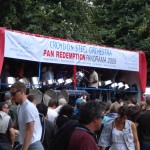
-
Steel Drum Ensemble in Hyde Park
After a busy few days nothing could be more relaxing than a day spent in a park…well two actually. In the morning we started out the day with a class in beautiful Regent’s Park located just a few minutes away from the Arran House. Our classroom discussion centered on two very different topics; Virginia Woolf’s Mrs. Dalloway and “the Blitz”. Despite the difference in subject material both conversations brought up some interesting points and I found myself seeing new perspectives on a lot of things both from my peers and from Professor Qualls.
Maybe it was just the time of day (early on a Saturday morning) but Regent’s Park had a very quiet, quaint feel to it. I realize there is still much of the park that I need to explore but from what I saw with the beautiful flower gardens and shrubbery and wide pathways it seems like it would be a great place to go for a run or relax with a book.
After a great lunch at an affordable mediterranean sandwich place with the three Andrew’s I headed out with Alli, Sarah, Mara and Kim to continue the preliminary work for our group project. We headed to Hyde Park, a place we knew would occupy most of our afternoon. Hyde Park immediately reminded me of Central Park more than any other green space I had visited in London thus far. We decided to wander towards the long expanse of water known as “the serpentine” running through the middle of the park. Along the way we passed a large group of people playing steel drums and moving to the music. The park felt alive and it was the first green space that I felt like was being utilized for large group purposes.
The water was filled with waterfowl of all shapes and sizes. There were ducks, swans and geese just to name a few. We saw that there were opportunities to rent boats for seven quid and we thought it would be a great idea to come back and do that another time. After crossing a bridge we came upon a Peter Pan statue. This was a perfect group photo op. After sitting down and taking in the scenery for a bit we headed back to the park exit content with our decision to choose Hyde as the basis for our group’s walking tour.
Sunday was another busy day. Aidan, Brandon and I headed to the British Museum where we attempted to get through the whole thing. This did not happen. We did end up getting through the Middle East, Greek, Roman, African and North American exhibits however. All in all not bad for one day. We also viewed a special exhibit the museum was featuring about living and dying. This certainly defied the plain yet effective pattern the British Museum has going for it. In one section of this exhibit there was a woman and a man featured. There was a long tapestry made out of all of the pills these two people took throughout their lifetime. Everything from vitamins to birth control to painkillers for arthritis were featured in this amazing display. There was also a display done on how different cultures around the world react to life and death and even how they bury their dead. Not only was this a fascinating exhibit but it added a whole new wrinkle to the British Museum.
After a quick break Brandon, Aidan and I decided it would be interesting to head over to Notting Hill where the annual Notting Hill Carnival was taking place. We had been warned multiple times to bring only the bare minimum and be extremely careful with our belongings. We had also been warned about the huge crowds and lack of personal space we would encounter. Unfortunately for us nothing could have prepared us for what we saw once we got off of the Notting Hill tube stop. Endless masses of humanity were walking. We had no idea where their final destination was so we simply followed. Eventually the street opened up and even more people appeared. There were floats making their way down the streets, loud music blasting and people dancing and singing. It was unlike anything I had ever seen before. People that lived in the area were charging others money to use their bathroom. There were no trash cans so litter was piling up in the streets. Other folks were walking around with coolers of beer and soda in an attempt to make a little money. Although large crowds are not my thing and I do enjoy my personal space going to the carnival was an eye opening experience. As Americans sometimes we are so driven to achieve a certain goal, meet a certain deadline, fulfill a certain quota. There has to be some sort of end reward for everything. The nice thing about the Carnival and the thing that I struggled to understand the most is that there was really no point to it. Each and every person made their experience what they wanted it to be. Some used it to express their cultural heritage, some used it as an excuse to hang out with friends or family and some simply used it to get drunk. The bottom line was that everyone was there and having a good time in their own right.
After navigating our way through masses of people we veered off the main path a little bit and found a street with some places that looked like they would be good to eat at. After completing our meals we decided we should start finding a way out of the carnival knowing that it would take us a very long time to navigate out of the crowd. For a while it seemed that no matter where we walked there were people in every direction with no apparent end in sight. Finally we approached a street corner and across the street there was traffic, the first sign that the festival had an end. We attempted to navigate our way to Paddington Station but after a decent walk opted to take the bus to Great Portland Street instead and walked back from there. The entire journey took less time than I thought it would and we were back at the Arran House by a little after 6.
As I continue to explore here I feel like I am getting a better sense of all the different expressions London has to offer. I’ve seen it’s artsy side, it’s serious side, it’s fun side and it’s theatrical side. What will I find next?
Tags: Henry · Museums









